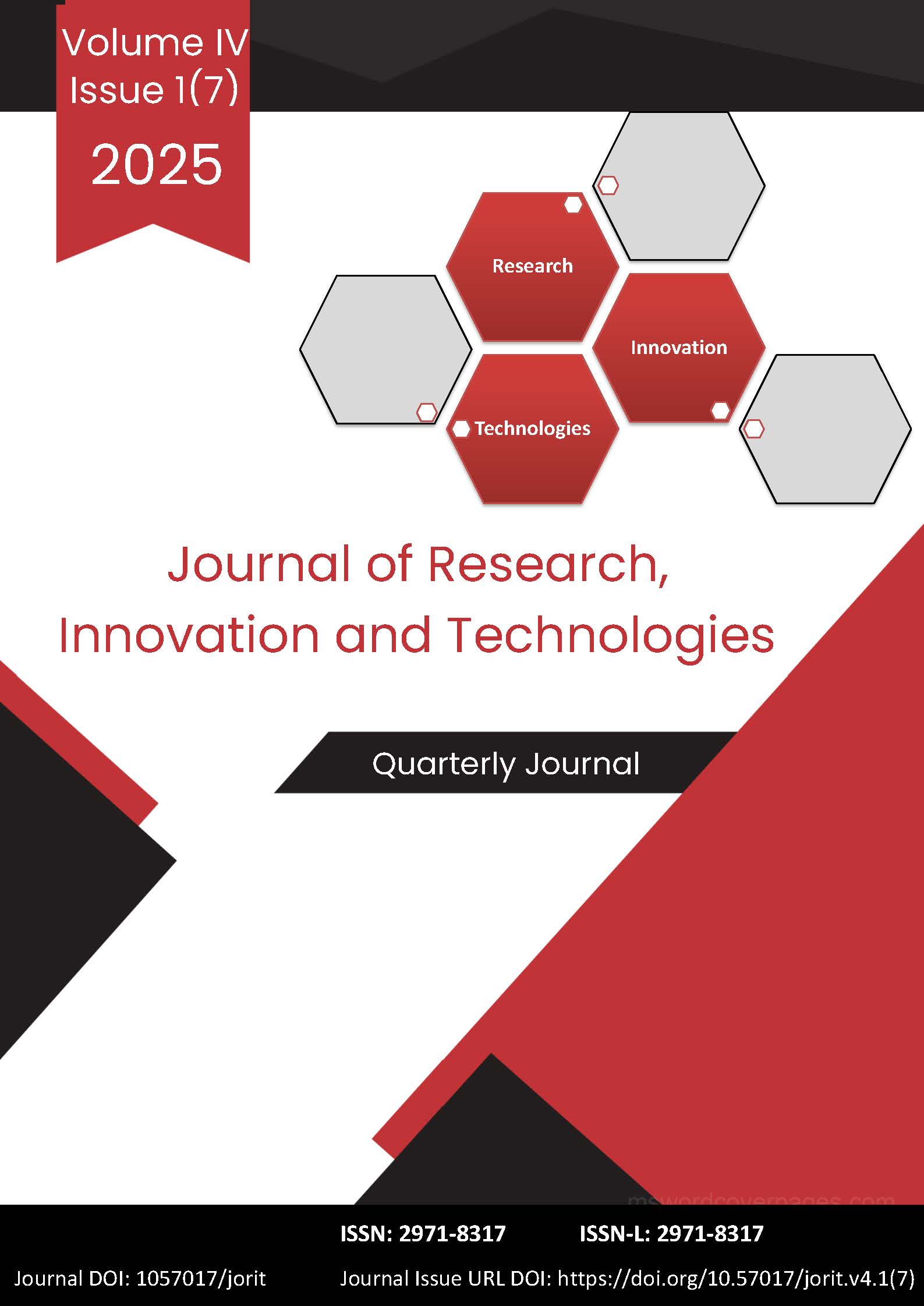Volume IV, Issue 1(7), 2025
-
This paper presents two synthetic estimations of the Gini coefficient at a municipality level for Colombia in the years 2000-2020. The methodology relies on several machine learning models to select the best model for imputation of the data. This derives in two Random Forest models where the first is characterised by containing Dominant Fixed Effects, while the second contains a set of Dominant Varying Factors. Upon these estimations, the Synthetic Gini Coefficients for both models are inspected, and public links are generated to access them. The Dominant Fixed Effects models is rather “stiff” in contrast to the Varying Factor model. Hence, for researchers it is recommended to use the Synthetic Gini Coefficient with Varying Factors because it contains greater variability across time than the Dominant Fixed Effects models.
© The Author(s) 2025. Published by RITHA Publishing. This article is distributed under the terms of the license CC-BY 4.0., which permits any further distribution in any medium, provided the original work is properly cited maintaining attribution to the author(s) and the title of the work, journal citation and URL DOI.
-
This article aims to discuss the evolution over the centuries of the role and social position of those mastering the technologies of their time. We suggest that the Industrial Revolution, the rationalization of technical and managerial processes, then the rise of IT, the ascent of cryptocurrencies and finally the emergence of the neoliberal state have lifted a fringe of these individuals to the top of the social hierarchy. Among the “technology masters”, we distinguish three families: those who remain at the service of the State and the established order, those who have exploited, consciously or not, the withdrawal of the neoliberal State to offer services and innovations formerly assumed by the public sector, and finally those who have consciously taken advantage of this same withdrawal and the recognition they enjoy in society to propose other models (free software, open source, crypto anarchism, technical alternatives, etc.).
© The Author(s) 2025. Published by RITHA Publishing. This article is distributed under the terms of the license CC-BY 4.0., which permits any further distribution in any medium, provided the original work is properly cited maintaining attribution to the author(s) and the title of the work, journal citation and URL DOI.
-
The domination of cyberspace technologies in inter-human communications is obvious because of their ultra-rapidness and enormous data capacity. Human-intensive use of cyberspace increased the magnitude of streamed data through its nodes, created by two sources: human users and AI. While humans can control their generated data, it proves impossible to control AI due to its super intelligence along with their self-developing abilities, enabling it to produce unlimited volumes of data. It is known that cyberspace depends on physical infrastructure, which is inherently limited. Despite investments to expand capacity, overloading this infrastructure with unlimited data creates critical functionality issues. Additionally, the presence of uncontrollable AI elements leads to unpredictable outcomes. Ultimately, this results in AI dominating cyberspace, a phenomenon known as cyber singularity.
The ultimate consequences of AI cyber singularity motivated the study to recall a similar phenomenon in astrophysics: gravitational singularity. Using general relativity theory, the research analyses the dilemma of data overload in cyberspace and its effects, drawing parallels between outer space and cyberspace. It aims to illustrate AI's acquisition of cyber singularity according to astrophysics laws on gravitational singularity, providing an innovative perspective for scientists and scholars studying cyberspace.
© The Author(s) 2025. Published by RITHA Publishing. This article is distributed under the terms of the license CC-BY 4.0., which permits any further distribution in any medium, provided the original work is properly cited maintaining attribution to the author(s) and the title of the work, journal citation and URL DOI.
-
This paper presents a conceptual framework for enhancing knowledge management (KM) processes in virtual organizations through the integration of mobile agents. With the growing digitization of workplaces and the proliferation of distributed teams, managing and leveraging knowledge efficiently has become critical. Mobile agents offer promising features such as autonomy, adaptability, and mobility, making them suitable for dynamic knowledge environments. The paper outlines the architecture of a multi-agent system for KM and discusses its potential impact on organizational performance. Emphasis is placed on the role of intelligent agents in collecting, filtering, and disseminating relevant knowledge across virtual settings. The proposed model aims to support decision-making, reduce information overload, and facilitate knowledge sharing among members of decentralized organizations.
© The Author(s) 2025. Published by RITHA Publishing. This article is distributed under the terms of the license CC-BY 4.0., which permits any further distribution in any medium, provided the original work is properly cited maintaining attribution to the author(s) and the title of the work, journal citation and URL DOI.
-
Speaker identification among identical twins remains a significant challenge in voice-based biometric systems, particularly under emotional variability. Emotions dynamically alter speech characteristics, reducing the effectiveness of conventional identification algorithms. To address this, we propose a hybrid deep learning architecture that integrates gender and emotion classification with speaker Identification, tailored specifically to the complexity of identical twin voices. The system combines Emphasized Channel Attention Propagation and Aggregation in Time Delay Neural Network (ECAPA-TDNN) embeddings for speaker-specific representations, Power Normalized Cepstral Coefficients (PNCC) for noise-robust spectral features, and Maximal Overlap Discrete Wavelet Transform (MODWT) for effective time-frequency denoising. A Radial Basis Function Neural Network (RBFNN) is employed to refine and fuse feature vectors, enhancing the discrimination of emotion-related cues. An attention mechanism further emphasizes emotionally salient patterns, followed by a Multi-Layer Perceptron (MLP) for final classification. The model is evaluated on speech datasets from RAVDESS, Google Research, and a proprietary corpus of identical twin voices. Results demonstrate significant improvements in speaker and emotion recognition accuracy, especially under low signal-to-noise ratio (SNR) conditions, outperforming traditional Mel Cepstral-based methods. The proposed system’s integration of robust audio fingerprinting, feature refinement, and attention-guided.
© The Author(s) 2025. Published by RITHA Publishing. This article is distributed under the terms of the license CC-BY 4.0., which permits any further distribution in any medium, provided the original work is properly cited maintaining attribution to the author(s) and the title of the work, journal citation and URL DOI.
-
The aim of this study is to evaluate the performance of a proposed model utilizing the Technology Acceptance Model (TAM) to forecast student perceptions of statistics education with advanced technology. A total of 379 undergraduate students from Malaysia’s East Coast region were recruited using a simple random sampling technique. This study incorporates six main constructs that are tested simultaneously, namely social influence, self-efficacy, perceived usefulness, perceived ease of use, attitude toward using, and behavioural intention. The Pooled Confirmatory Factor Analysis (PCFA) was employed to assess the factor loadings and fitness of the model being tested. Moreover, the Composite Reliability (CR) and Average Variance Extracted (AVE) were established to assess their reliability and validity. The results of the Confirmatory Factor Analysis (CFA) demonstrated that all six constructs achieved satisfactory levels of model fit, reliability, and validity. These findings confirm that the measurement model is statistically robust and that each construct is well-defined and appropriate for further analysis. Given their strong psychometric properties, these constructs provide a solid foundation for future research and should be considered for further investigation by examining the structural relationships among them, particularly in the context of technology adoption in statistics education.
© The Author(s) 2025. Published by RITHA Publishing. This article is distributed under the terms of the license CC-BY 4.0., which permits any further distribution in any medium, provided the original work is properly cited maintaining attribution to the author(s) and the title of the work, journal citation and URL DOI.
-
The purpose of this study is to analyse the effectiveness of implementing adaptive AI learning models in decision support systems to optimise the functioning of smart regions. The study provides a detailed examination of the application of machine learning algorithms, deep learning, and reinforcement learning across various sectors, such as urban management, energy resources, and security. The results revealed that the implementation of these models enhances the efficiency of urban system management, reduces costs, and increases the flexibility of decision-making processes. In particular, adaptive models in energy resource management optimise decision-making processes, leading to more rational resource use and substantial cost reductions. In the security field, adaptive AI models show improvements in predicting and preventing incidents, ensuring more reliable and stable system performance. Moreover, the results include the implementation of adaptive models based on programming languages such as TypeScript and JavaScript. The study demonstrated that the use of TypeScript reduces errors and improves system scalability due to strict typing, as shown in the implementation of a reinforcement learning model. Meanwhile, the use of JavaScript enabled the effective adaptation of models to new data through dynamic updates of regression coefficients, leading to improved prediction accuracy.
© The Author(s) 2025. Published by RITHA Publishing. This article is distributed under the terms of the license CC-BY 4.0., which permits any further distribution in any medium, provided the original work is properly cited maintaining attribution to the author(s) and the title of the work, journal citation and URL DOI.





